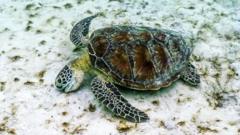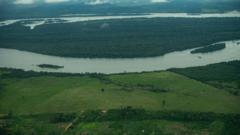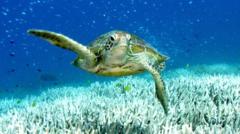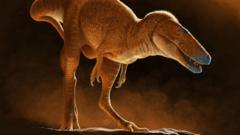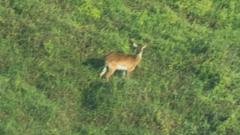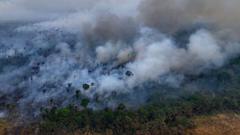A remarkable expedition to Peru's Alto Mayo region has uncovered 27 previously unknown species, including an amphibious mouse with webbed feet and a strange blob-headed fish. This initiative, led by scientists from Conservation International alongside local indigenous groups, highlights the rich biodiversity of a region heavily impacted by human activity.
New Discoveries: 27 Species Unveiled in Peru's Alto Mayo

New Discoveries: 27 Species Unveiled in Peru's Alto Mayo
Scientists reveal new lifeforms, including a unique swimming mouse and a blob-headed fish, during an expedition in Peru.
The expedition took place within Alto Mayo, a protected area in northern Peru known for its diverse ecosystems and significant indigenous territories. Although already under pressure from deforestation and agricultural encroachment, this expedition has discovered an astonishing array of life. In addition to the mouse and fish, scientists identified a new species of dwarf squirrel, eight types of fish, three amphibians, and ten butterfly species. Experts believe that up to 48 additional species might be uncovered pending further investigation.
Trond Larsen, a senior director at Conservation International, expressed his amazement at the discoveries, reflecting on the significance of these findings in an area so influenced by human activity. Indigenous researcher Yulisa Tuwi emphasized that the report strengthens the Awajún people's ability to safeguard their culture and natural resources by enhancing their understanding of the unique ecosystems they inhabit.
Among the standout discoveries is a new dwarf squirrel, measuring just 14 cm (5.5 inches), which belongs to a novel genus, granting it greater recognition. The expedition also encountered a fascinating spiny mouse characterized by its distinctive stiff guard hairs resembling hedgehog spines. Meanwhile, the newly identified "amphibious mouse," rare for its semi-aquatic lifestyle, forages mainly for aquatic insects.
The blob-headed fish, a type of bristlemouth armored catfish, astonished scientists with its unique physical characteristics, which the indigenous Awajún people were already familiar with. Other thrilling finds included a tiny arboreal opossum with surprisingly large ears, and an array of new butterfly species. This research not only enriches the scientific community’s understanding of biodiversity in the Amazon but also underscores the invaluable traditional knowledge of local indigenous groups.
Trond Larsen, a senior director at Conservation International, expressed his amazement at the discoveries, reflecting on the significance of these findings in an area so influenced by human activity. Indigenous researcher Yulisa Tuwi emphasized that the report strengthens the Awajún people's ability to safeguard their culture and natural resources by enhancing their understanding of the unique ecosystems they inhabit.
Among the standout discoveries is a new dwarf squirrel, measuring just 14 cm (5.5 inches), which belongs to a novel genus, granting it greater recognition. The expedition also encountered a fascinating spiny mouse characterized by its distinctive stiff guard hairs resembling hedgehog spines. Meanwhile, the newly identified "amphibious mouse," rare for its semi-aquatic lifestyle, forages mainly for aquatic insects.
The blob-headed fish, a type of bristlemouth armored catfish, astonished scientists with its unique physical characteristics, which the indigenous Awajún people were already familiar with. Other thrilling finds included a tiny arboreal opossum with surprisingly large ears, and an array of new butterfly species. This research not only enriches the scientific community’s understanding of biodiversity in the Amazon but also underscores the invaluable traditional knowledge of local indigenous groups.

